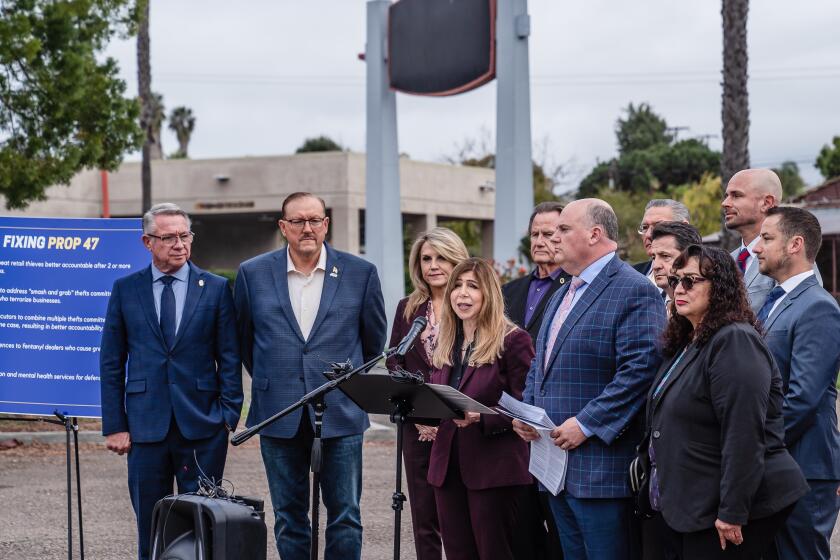Native American culture celebrated at powwow
At the center of a circular arena, the steady, hypnotic beat of a single drum prompted traditional dancers in brilliant regalia to begin the Gourd Dance — the first of many performances that celebrated American Indian culture at the South Bayfront Powwow in Chula Vista over the weekend.
The two-day annual event that ended Sunday featured dances, songs, prayers and other ceremonies for Native Americans to commune together and for non-Native Americans to share in that culture.
“Powwows help continue the beautiful culture (American Indians) have,” said Randy Edmonds of the Kiowa/Caddo tribes. “We come together in a circular setting, a circle of life, to celebrate and perpetuate our Indianness. We do this often so we don’t forget who we are.”
Dance is a powerful feature of these events, symbolizing the artistic and nature-infused spirituality of American Indian heritage.
The get-togethers are a particularly important cultural outlet for American Indians who don’t live on reservations. Edmonds estimated about 18,000 urban American Indians live in San Diego County, in addition to the 7,000 to 8,000 people that live on the 18 federally recognized reservations in the region.
“It’s like a family reunion,” said Cherokee tribe member Vickie Gambala, who works with Soaring Eagles, a local program designed to strengthen tribal values, particularly among urban American Indian communities. “(Urban American Indians) don’t get the chance to gather and socialize together as often, so events like this give us that opportunity.”
Sunday’s powwow was part church, part family gathering and part educational event.
Before the celebration began, prayer men blessed a circular area called the arena, where dancers would spin and step to music infused with spiritual overtones.
Surrounding it were about a dozen canopies. Under their shade, families talked and laughed together, some renewing friendships, others forging new ones.
Gambala said throughout the event, American Indians welcomed questions from community members.
“It’s the way to celebrate our culture and share our culture with the non-Native American community,” she said.
Organizers estimated about 2,000 people attended the event, including members from about 30 tribes — from the Chippewa to the Yaqui.
Jennifer Garcia, of the Tule River Yokuts tribe and a Kearny Mesa resident, said all five of her children regularly attend traditional powwows and have participated in traditional dance.
Nearby, two of her sons, 6-year-old Thunder and 12-year-old Ricky, prepared for their upcoming performances by donning regalia — symbolic outfits that combine elements traditional to the dance and the individual style of the dancer.
As children get older, they are able to compete in traditional dance. Jennifer said her son Ricky has won cash prizes at several competitions. Rather than spending his winnings on toys such as Xbox games, she said he invested in some more expensive pieces for his regalia.
“He wanted to invest in his outfit,” she said. “(Dance) gives them a sense of pride and makes them want to be more immersed in their own culture.”


